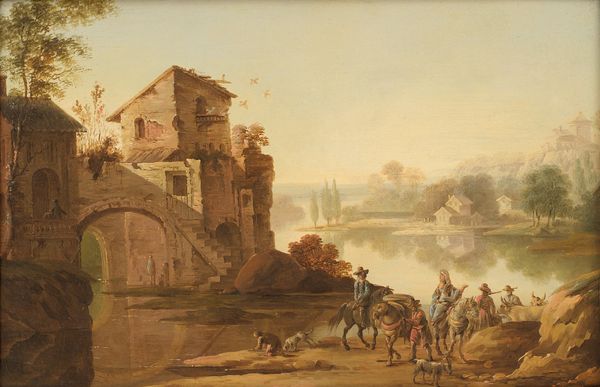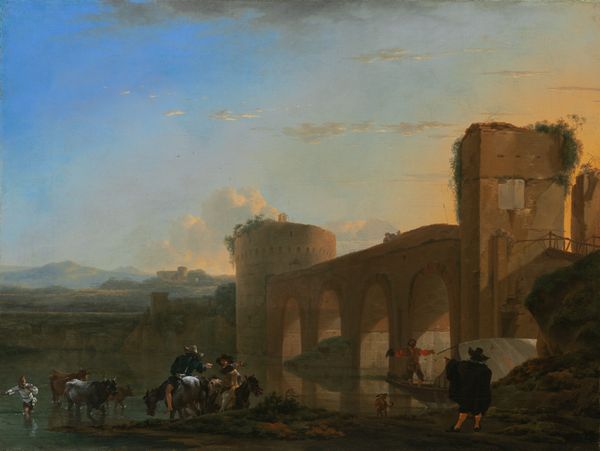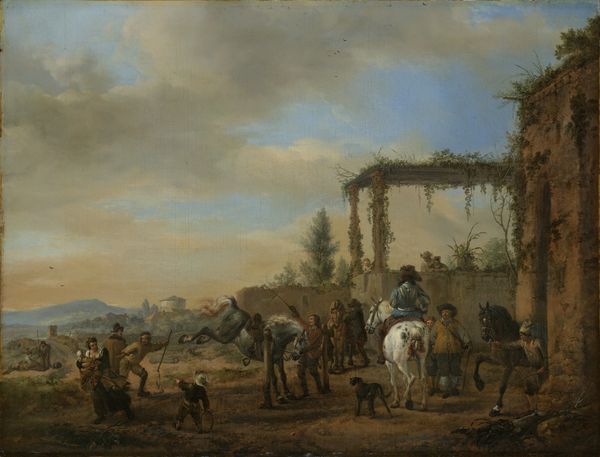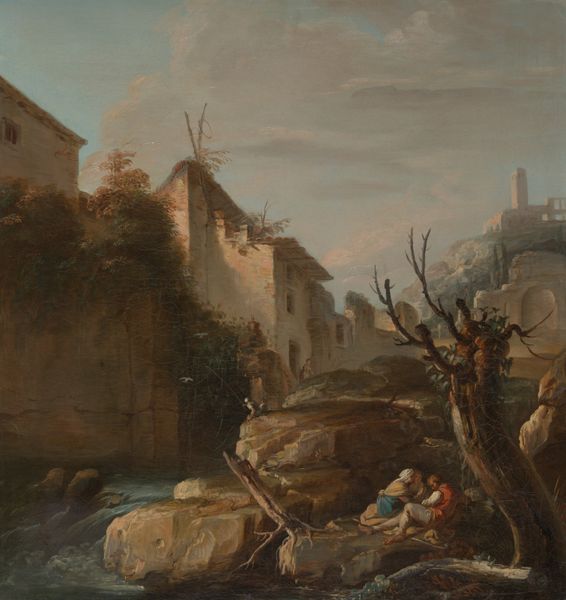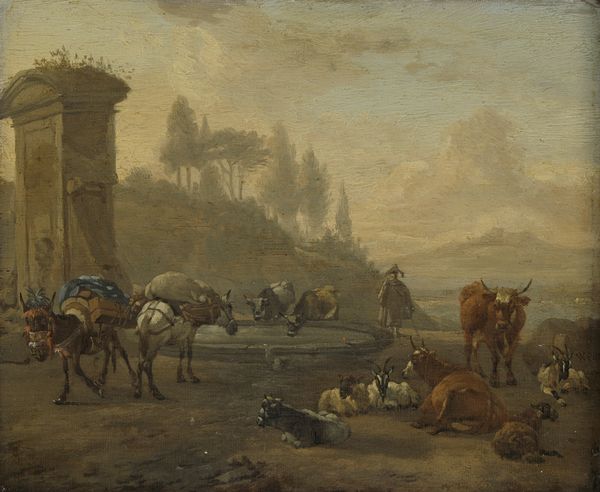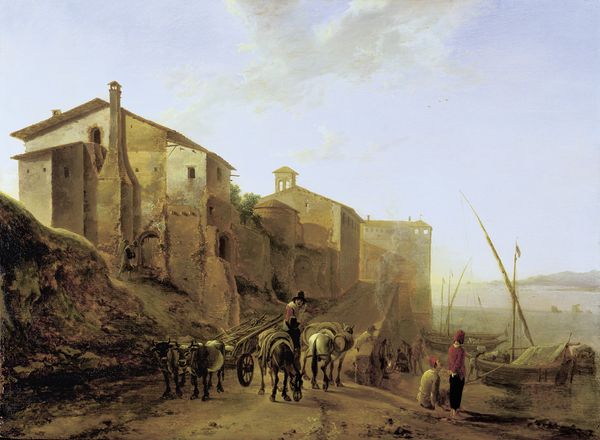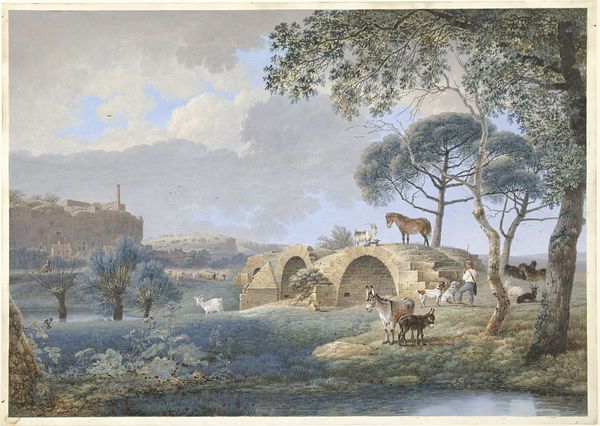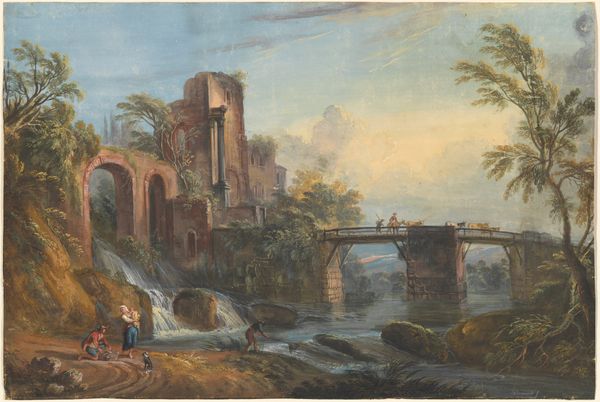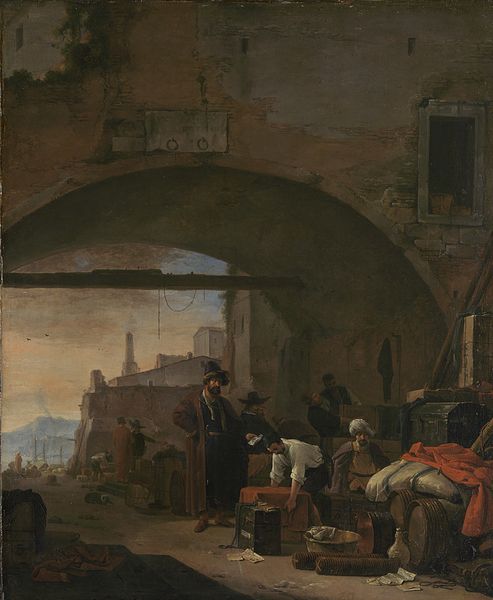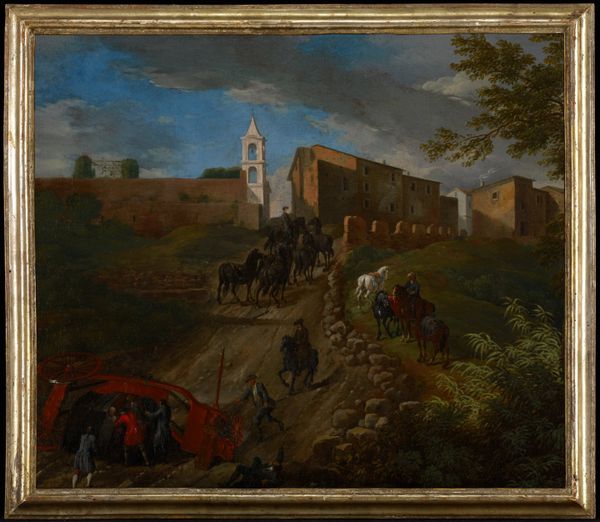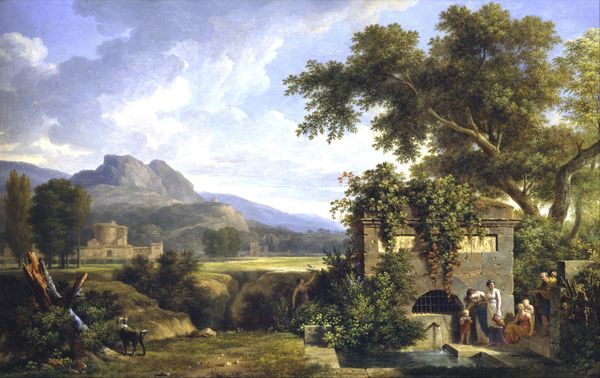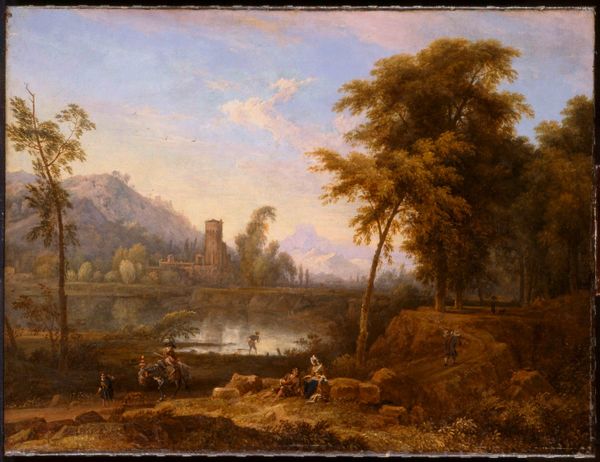
Imaginary Landscape with the Palatine Hill from Campo Vaccino 1730 - 1735
0:00
0:00
oil-paint, architecture
#
baroque
#
oil-paint
#
landscape
#
figuration
#
oil painting
#
cityscape
#
history-painting
#
architecture
Dimensions: 25 x 31 7/8 in. (63.5 x 81 cm)
Copyright: Public Domain
Curator: Francois Boucher's "Imaginary Landscape with the Palatine Hill from Campo Vaccino," created between 1730 and 1735, presents us with an idealized vision of the Roman Campagna. Editor: My first impression is that of pastoral melancholy. The scene is washed in a soft, almost nostalgic light. There's a tangible contrast between the vibrant, active foreground figures and the decaying architecture in the background. Curator: That interplay is critical. Boucher was deeply interested in how artistic representations shaped perceptions of history and nature. He romanticizes the past, embedding working-class figures in an environment marked by both natural beauty and classical ruins. Think about how the burgeoning art market itself drove a fascination with such pastoral scenes among elite audiences. Editor: Right, and placing these figures-- these laborers and their livestock--within a classical landscape presents a very specific narrative. How might a contemporary lens view the idealization of labor amidst imperial decline? There’s a power dynamic here, certainly—a certain detachment that might seem problematic. What does it mean to find beauty in these power imbalances? Curator: Absolutely, and the painting can also be interpreted through the lens of its reception. The picturesque aesthetic was extremely fashionable, driven in part by travel and the Grand Tour. Consider the politics of this gaze--the wealthy Northerners traveling through, and purchasing art depicting Southern landscapes and the lives of those living within them. Editor: So it becomes a symbol of a social hierarchy being consumed as a form of aesthetic pleasure. And beyond its symbolism, the technical aspect of the painting impresses me. The detail in rendering the foliage, contrasting with the eroded structures, hints at the unstoppable, restorative force of nature over human creations. Curator: He’s very skilled at constructing these visually pleasing spaces, even if the “imaginary” title suggests an artistic departure from complete topographical accuracy. One must remember that landscape painting in the 18th century, even when depicting specific places, frequently functioned as a form of constructed and controlled environment. Editor: Which only highlights how art becomes a cultural product loaded with ideological messages. It reminds us to question whose history gets venerated, whose labor gets romanticized, and how these narratives are framed for consumption. It’s a layered experience! Curator: Indeed. Considering Boucher's background within courtly artistic circles really adds depth to that analysis. It really speaks volumes about the politics inherent in depicting such seemingly apolitical scenes. Editor: It does. A landscape on the surface can reveal profound truths. Thanks for pulling apart all of that, it’s very revealing!
Comments
No comments
Be the first to comment and join the conversation on the ultimate creative platform.
